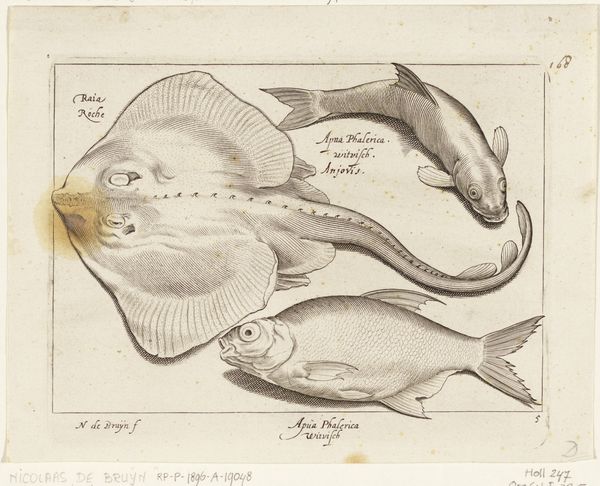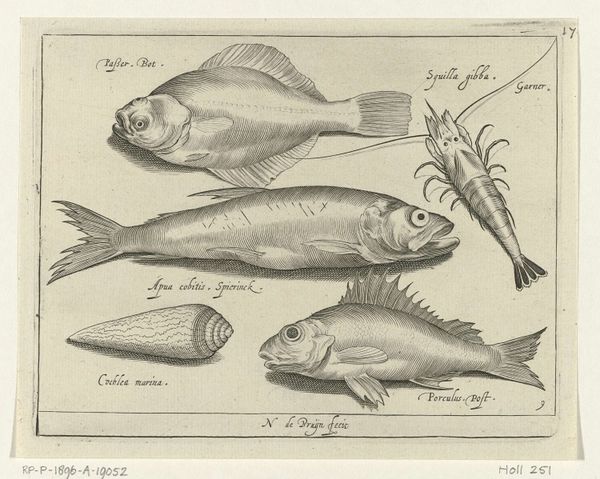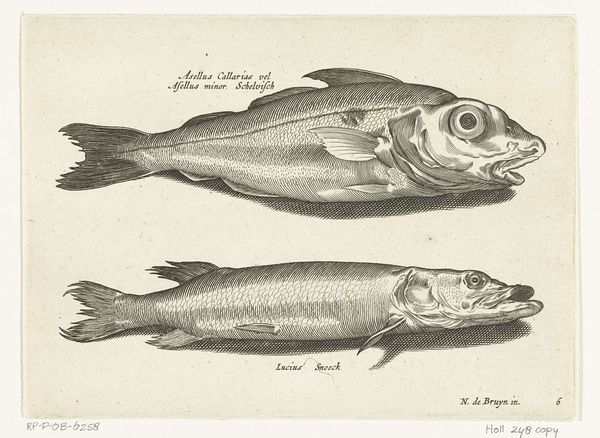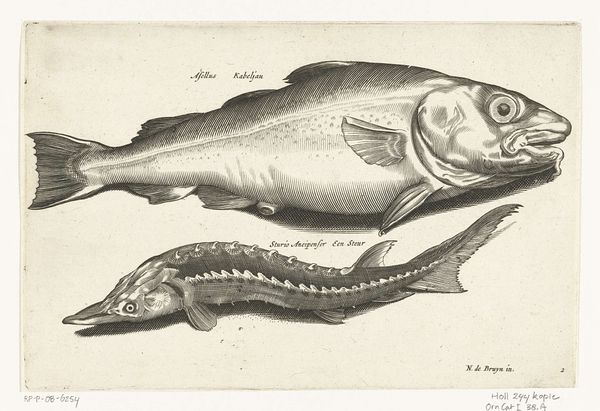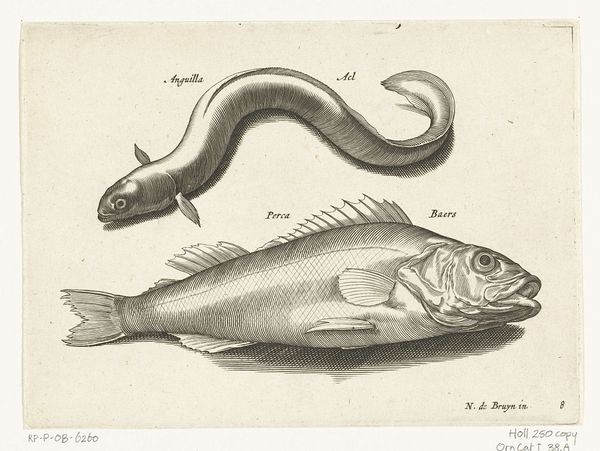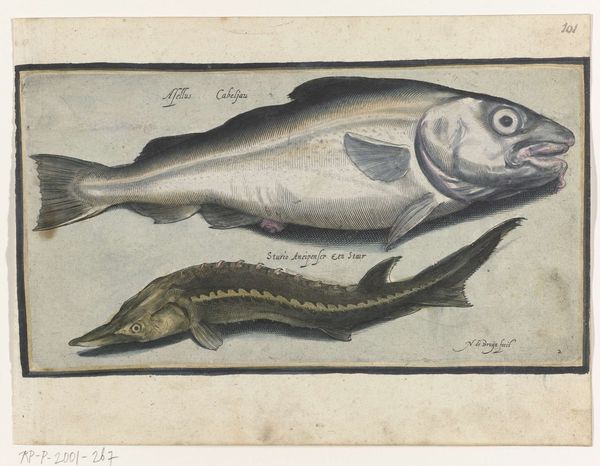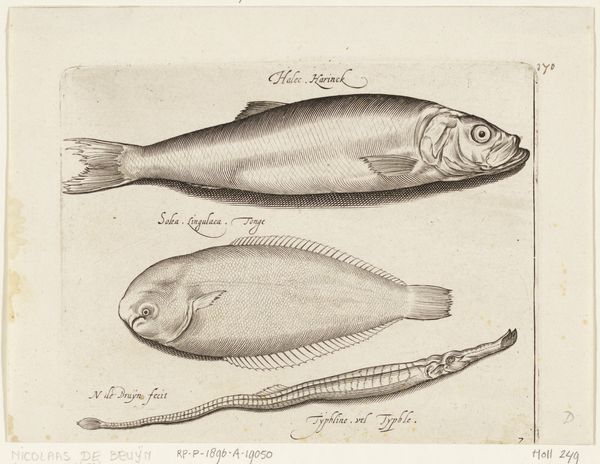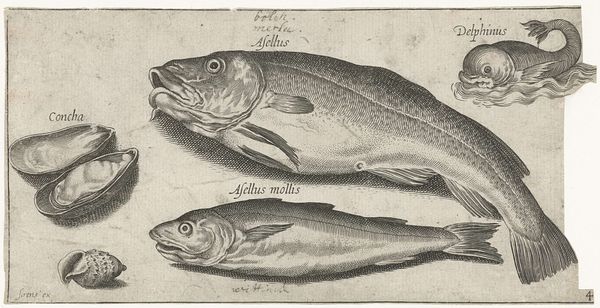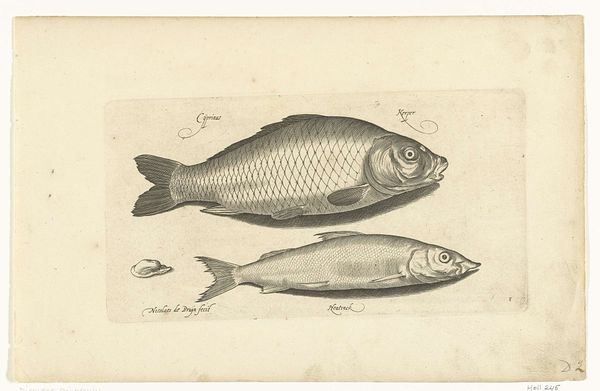
print, engraving
#
dutch-golden-age
# print
#
old engraving style
#
caricature
#
figuration
#
engraving
#
realism
Dimensions: height 136 mm, width 185 mm
Copyright: Rijks Museum: Open Domain
Editor: So, this is “Rog, brasem en witvis,” created sometime between 1581 and 1652, but the artist is unknown. It’s an engraving. The array of different fishes gives this print a cool scientific feeling. What can you tell me about it? Curator: That “scientific feeling” is key. Consider the historical context: The Dutch Golden Age saw a surge in scientific inquiry, with increased access to information, fueling exploration and classification. Prints like this served a public need. Editor: A public need? In what way? Curator: Absolutely! How do you think images like this could have been used back then? Editor: Maybe…to educate? Or as illustrations in books, kind of like a visual encyclopedia? Curator: Precisely! Before photography, accurate visual representations were crucial. These prints democratized knowledge about the natural world. Consider, too, the patronage system; such works might reflect a desire to please wealthy merchants who were investing in trade and exploration. How do socio-political forces potentially relate to the image? Editor: It highlights what the Dutch were encountering in their trading voyages? Perhaps displaying control of the sea and the resources they found? Curator: Very good observation. This print wasn't just about accurate depiction; it subtly communicated the status and global reach of Dutch society. We need to acknowledge it may communicate subtle colonial ideas about dominating nature. Editor: That gives me a lot to consider, not just in terms of technique but how imagery can convey a nation's values. Curator: Yes! That subtle messaging underscores how deeply art is entangled with cultural forces.
Comments
No comments
Be the first to comment and join the conversation on the ultimate creative platform.
